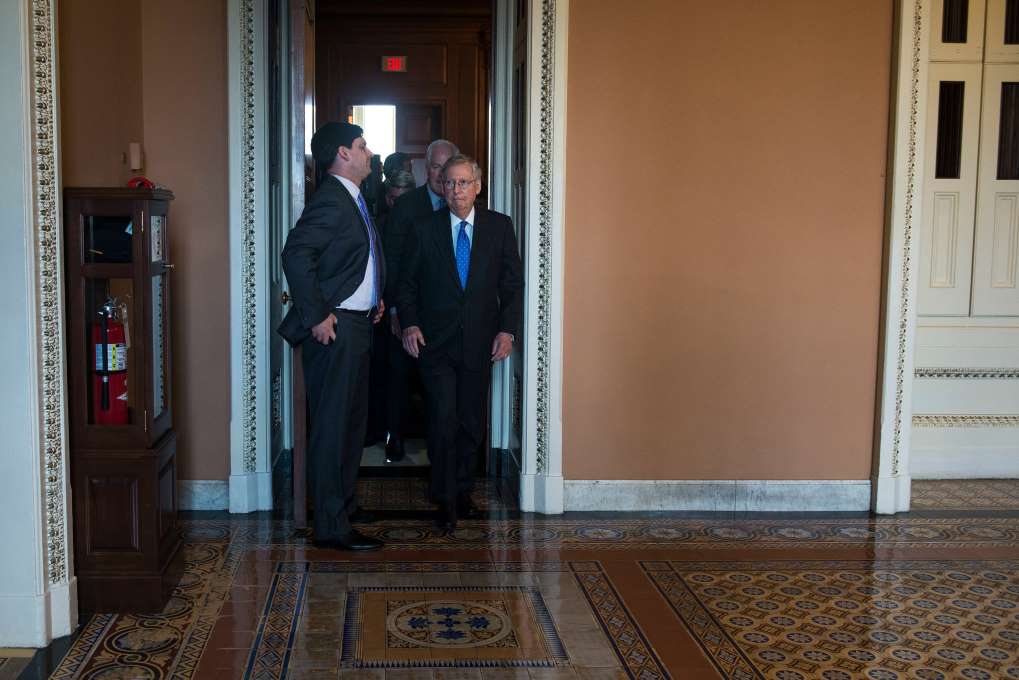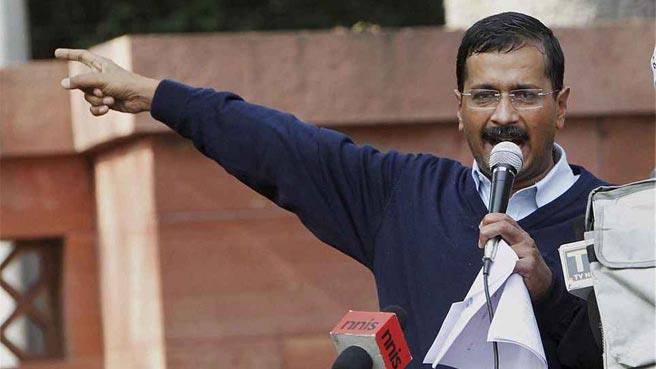April 6, 2017
WASHINGTON, D.C. — The conventional Washington wisdom dictates that the end of the judicial filibuster is also the end of life as it is currently known in the Senate.

Senator Mitch McConnell of Kentucky, the majority leader, after a Republican caucus meeting on Tuesday.
April 6, 2017
WASHINGTON, D.C. — The conventional Washington wisdom dictates that the end of the judicial filibuster is also the end of life as it is currently known in the Senate.

Senator Mitch McConnell of Kentucky, the majority leader, after a Republican caucus meeting on Tuesday.
In truth, it may not make that much of a difference at all. In an unexpected way, it may well herald the beginning of a better era for the Senate.
The Senate Republicans’ successful effort on Thursday to end the 60-vote threshold to proceed with confirmation of Supreme Court nominees was really only the final step in a process set in motion by Democrats in 2013 when they removed that threshold for other nominees.
That set off a far bigger firestorm, and Republicans now have simply extended that precedent.
Republicans are quick to point out — and many Democrats privately agree — that had former secretary of state Hillary Clinton won the White House last year, and Democrats taken the Senate, a similar confrontation was likely in the other direction, and that Democrats may have needed to take the same step as Republicans took to confirm any Supreme Court nominee that Ms. Clinton had chosen.
Congress has already been dwelling in the rubble for a while. A divisive showdown over a Supreme Court nominee was certainly not helpful in advancing comity, but it has not taken on the widespread acrimony that has consumed both houses of Congress in past fights, such as over government shutdown threats or the perpetual battles over the health care law.
Then there is President Trump. Yes, Republicans have labored to promote some of his priorities and look away from his myriad controversies, but they have also showed signs of holding together with Democrats toward mutual goals that are not always in concert with Mr. Trump’s.
To wit: Even as members of both parties railed against one another on the Senate floor on Thursday, appropriators and party leaders in the House and Senate were working to come up with a plan to fund the government for the rest of the year that would likely ignore Mr. Trump’s request for a large pile of cash to build a wall on the border with Mexico and cut programs that have bipartisan support.
While the White House and the House have struggled to find a way forward on health care, Republicans and Democrats in the Senate have held largely together in defiance of House-sought changes to the law that would have left many people in their respective states uninsured.
“I don’t want to sugarcoat what just happened here,” said Senator Gary Peters, Democrat of Michigan, as he walked off the floor after the vote that crushed the minority input, turning the Supreme Court, in his view, into another “hyperpartisan” branch of government. But, he said, “we have to get past this — the American people expect us to find common ground.”
“The best way to do that,” the senator said, “is in a bipartisan way.”
Senate Republicans indeed are eager to show that they are more functional than the House, where the chairman of the intelligence committee on Thursday had to remove himself from the investigation into Russian meddling in the election, where an effort to repeal the health care law has embarrassingly blown up and where little prescriptive policy has been seeded in recent years.
“The place of bipartisan solutions come from the Senate,” said Senator Cory Gardner, Republican of Colorado. “I think people will come together.”
If an alliance could be struck in the center, the fight for the 60 votes needed to pass might well be led by centrists such as moderate Democrats up for re-election next year in states where Mr. Trump was victorious, and Republicans like Senator Susan Collins of Maine and Lisa Murkowski of Alaska. The two last week forced Vice President Mike Pence to come to the Hill to break a 50-50 tie on a bill that threatened the funding of some Planned Parenthood operators.
Already, some Senate Republicans and Democrats are talking privately about a way forward, at least on the insurance exchanges on health care. “It’s very preliminary,” said Senator John Barrasso, Republican of Wyoming. “But it’s happening.”
As long as the filibuster remains a viable option for the minority on legislation — something Senator Mitch McConnell of Kentucky, the Republican leader, swears will not be removed — they may be able to get a few things done.
“This just further intensifies the commitment of the Senate to maintain the legislative margins that have always been a part of the Senate,” said Senator Roy Blunt, Republican of Missouri, who has held leadership positions in both houses of Congress. “I would hope we can start compartmentalizing,” and start to get things done, he said.
It is also true that Mr. McConnell and Senator Chuck Schumer of New York, the Democratic leader, enjoy a better relationship than the one that helped pave the way to Thursday’s showdown: that of Mr. McConnell and former Senator Harry Reid of Nevada.
Mr. Schumer expressed hope for a different future when he said to Mr. McConnell on the Senate floor on Thursday, “Let us go no further on this path.”
Courtesy: NY Times













































































































